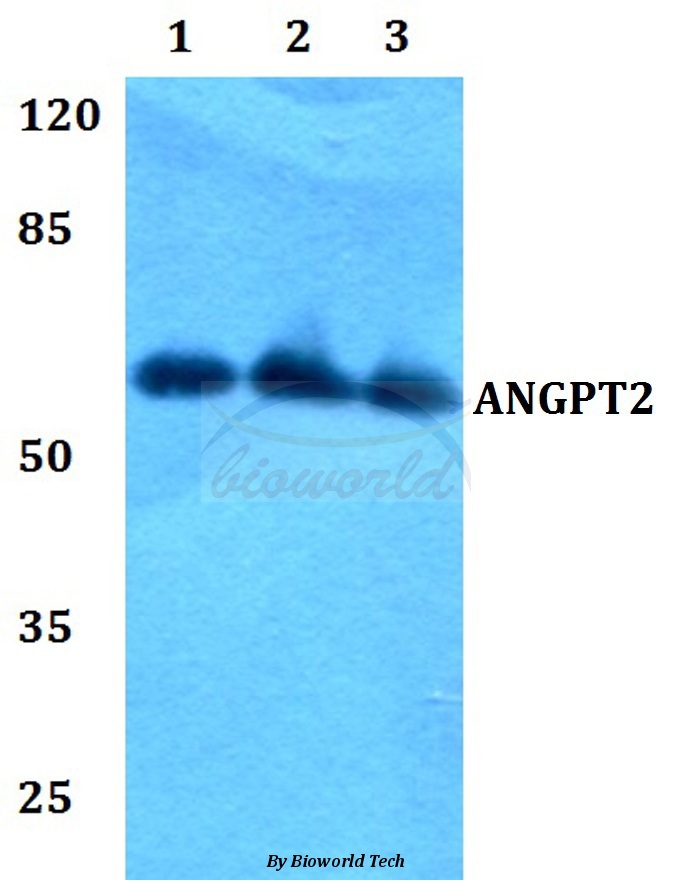Angiopoietin 2 antibody
GTX10601
ApplicationsWestern Blot, ELISA, ImmunoHistoChemistry, ImmunoHistoChemistry Paraffin
Product group Antibodies
TargetANGPT2
Overview
- SupplierGeneTex
- Product NameAngiopoietin 2 antibody
- Delivery Days Customer9
- Application Supplier NoteWB: 0.1-0.2 microg/mL. IHC-P: 5-15 microg/ml. *Optimal dilutions/concentrations should be determined by the researcher.Not tested in other applications.
- ApplicationsWestern Blot, ELISA, ImmunoHistoChemistry, ImmunoHistoChemistry Paraffin
- CertificationResearch Use Only
- ClonalityPolyclonal
- ConjugateUnconjugated
- Gene ID285
- Target nameANGPT2
- Target descriptionangiopoietin 2
- Target synonymsAGPT2, ANG2, LMPHM10, angiopoietin-2, Tie2-ligand, angiopoietin-2B, angiopoietin-2a
- HostGoat
- IsotypeIgG
- Protein IDO15123
- Protein NameAngiopoietin-2
- Scientific DescriptionAngiopoietin 2 and angiopoietin 1 have an N-terminal coiled-coil domain and a C-terminal fibrinogen-like domain. The coiled coil domains mediate ligand homo-oligomerization and the fibrinogen-like domains mediate ligand activity. Recombinant human angiopoietin 2 has a molecular mass of approximately 66 kDa in SDS-PAGE under reducing and non-reducing conditions. Human and mouse angiopoietin 2 share 85% sequence identity and are 60% identical to their Ang1 homologs. Angiopoietin 2 and angiopoietin 1 are closely related endothelial cell-specific ligands of the endothelial cellspecific receptor Tie2 expressed on endothelial cells and early hematopoietic cells. Ang1, Ang2, and their receptor Tie2 play critical roles in embryogenic angiogenesis, adult vasculogenesis, and endothelial cell proliferation. Angiopoietin2, released by endothelial cells of interior tumor vessels, promotes vessel regression and disassociation from surrounding tumor cells. Both Ang1 and Ang2 induce phosphorylation of expressed receptors on NIH3T3 fibroblasts stably expressing transfected Tie2. However, only Ang1 induces a chemotactic response and Tie2 phosphorylation on endothelial cells. Ang2 inhibits Ang1 induced endothelial cell responses mediated by Tie2. Angiopoietin 2 probably acts as a natural antagonist for Ang1 and Tie2 both in vivo and in vitro. In adult mice and humans, angiopoietin 2 is expressed at sites of vascular remodeling.
- Storage Instruction-20°C or -80°C,2°C to 8°C
- UNSPSC12352203

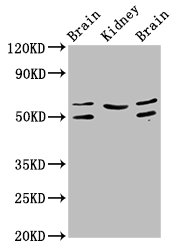
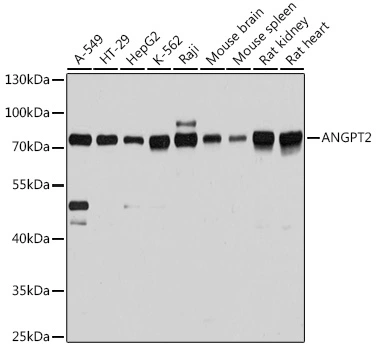
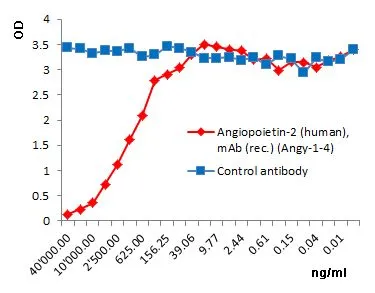
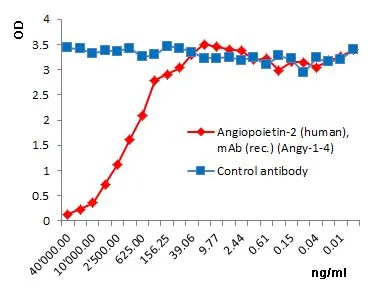
![IHC-P analysis of formalin fixed human placenta tissue using GTX52473 Angiopoietin 2 antibody [1F29].](https://www.genetex.com/upload/website/prouct_img/normal/GTX52473/GTX52473_20191119_IHC-P_w_23060900_245.webp)

